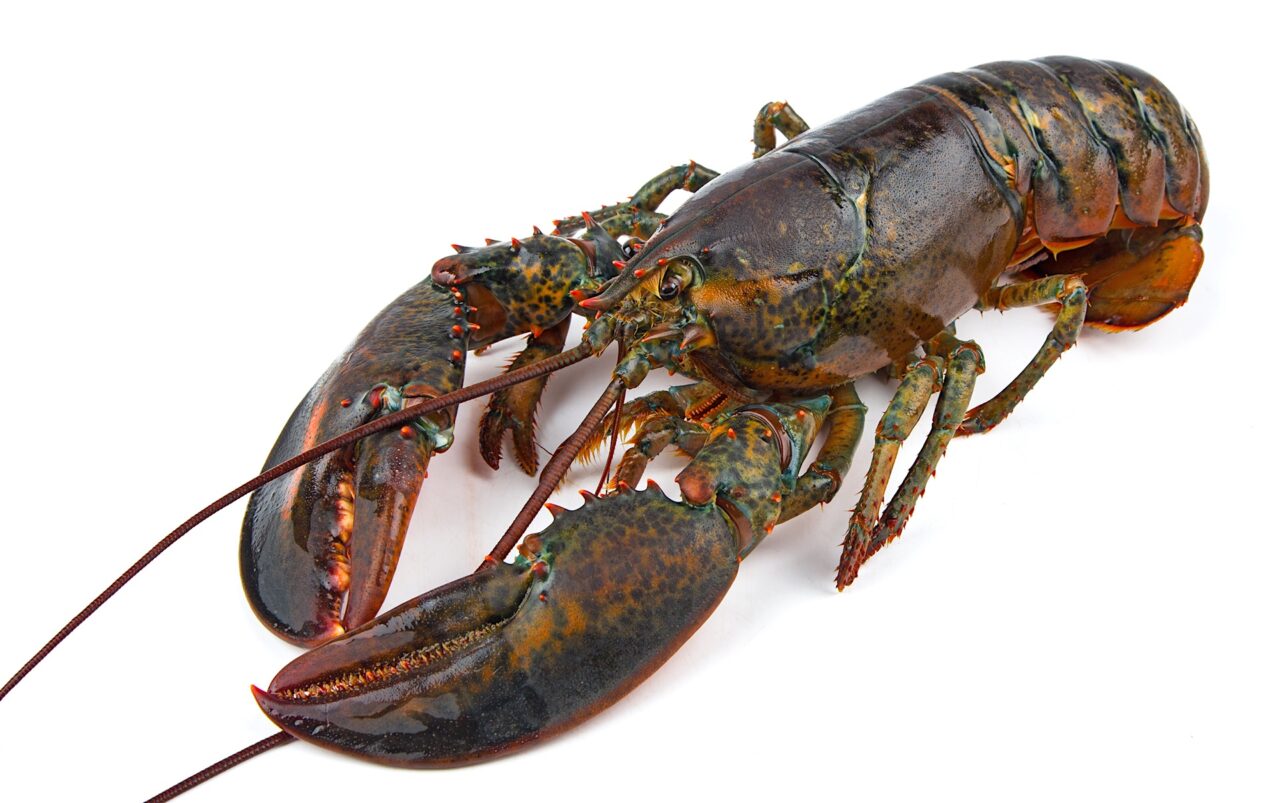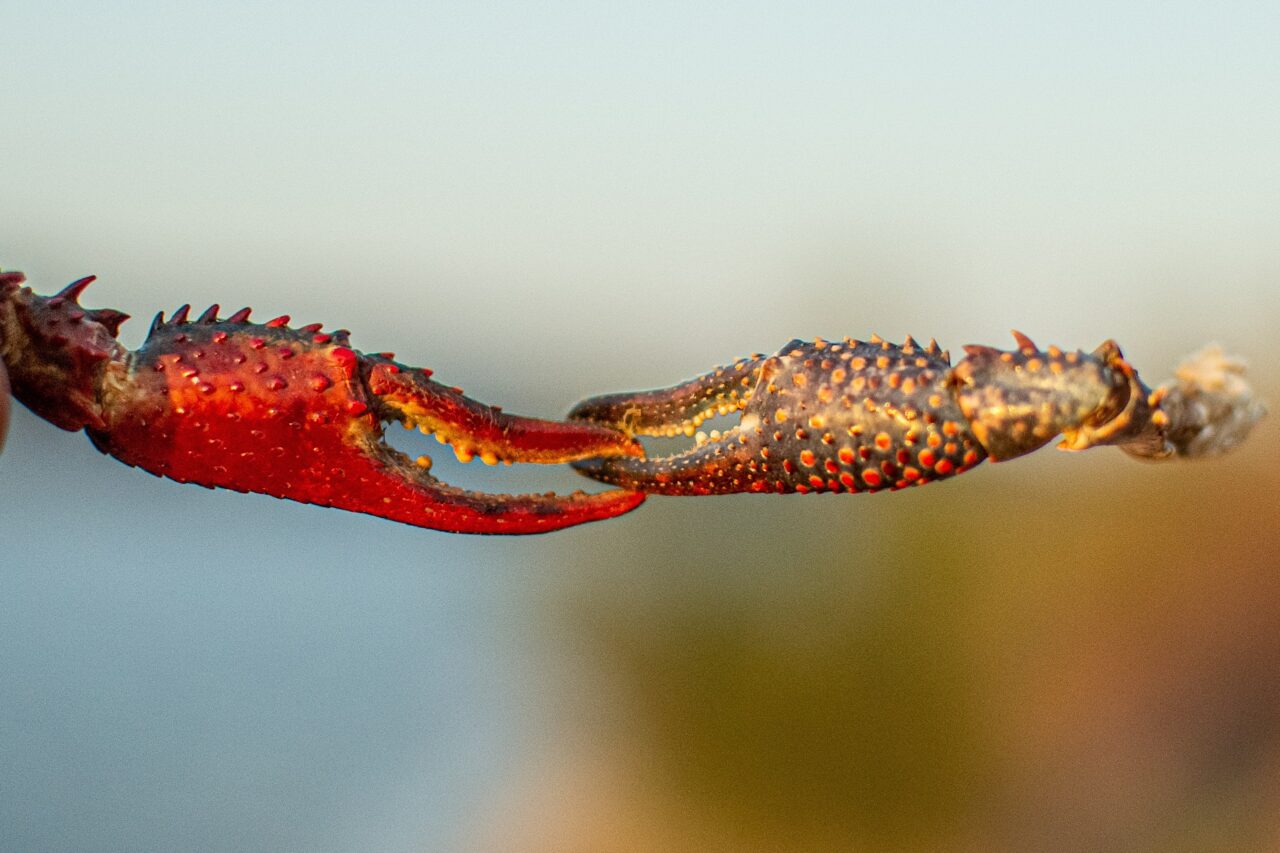Nederlands
English
Deutsch
Français
Lobster: a delicious treat for anyone who fancies a bit of exclusivity. And also for people who would rather not have an entire lobster on their plate, there are countless ways to enjoy this delicacy. Imagine a delicious lobster appetizer, a shrimp cocktail with crayfish, lobster croquettes, or a delicious bowl of warm lobster soup, for example. But where does ‘the lobster’ as we know it actually come from?
Just like crabs, lobsters belong to the shellfish or crustacean family. Both crabs and lobsters are special creatures and there is plenty to say about them. Do you want to know more about the many types of crabs? Then read our article about the many types of crab.
In this article, we will cover a few of the countless interesting facts about lobster. Topics that will be covered include:
There are two types of lobsters: the crayfish and the clawed lobster. Clawed lobsters are the most popular. These fascinating crustaceans are found in all oceans worldwide, in freshwater and in saltwater, and they can be subdivided into two types: the American and the European lobster.
The largest lobster population is located along the American and Canadian coastlines. Because more than half of the global lobster supply is imported from Canada, the American lobster (Homarus americanus) is also known as Canadian lobster. The Canadian lobster has a black-brown colour with an orange belly.

The European lobster (Homarus gammarus) has a slightly bluer colour and is therefore called the blue lobster. The latter is rarer and therefore more expensive. Despite the fact that the European lobster lives a lot closer to Dutch people – for example, the Oosterschelde is predominantly populated by the European lobster – most of the lobsters we eat in the Netherlands are imported from Canada.
An average lobster grows to between 30 and 60 centimetres, which is equal to two to four kilograms. Generally, the Canadian lobster tends to be slightly larger than the European lobster.
The main difference between lobsters and crayfish is immediately noticable to the naked eye: crayfish are much smaller. An average crayfish can grow to be about two to six centimetres long. In addition, crayfish mainly live in rivers, lakes, streams and ponds. In the Netherlands, the population of crayfish is very high.
Despite its small size, a crayfish looks a lot like a lobster; the anatomy of the little creature is almost identical. The taste and texture of both varieties are also similar. Because of their shape and size, crayfish are often incorrectly compared to shrimp.
There are also various types of crayfish, such as the American crayfish, the Turkish crayfish and the marbled crayfish. The only species that lives in the Netherlands is the European crayfish.
The Red American crayfish (Procambarus clarkii) is the most well known and most popular American crayfish. What makes this crayfish special is the beautiful, bright red colour all over its body and claws. Other smaller species of American crayfish include the striped American crayfish, the knobby American crayfish, and the spotted American crayfish.
Mooijer-Volendam sells the Red American crayfish, cooked in its entirety and marinated in white wine sauce. Red American crayfish meat is also available ready-made: already cooked and fully cleaned crayfish meat. Ideal for in a pasta dish or for making a delicious shrimp cocktail.
ust like crabs, lobsters have a segmented body; divided into small sections. A lobster keeps growing throughout its entire life. However, the skin of a lobster does not grow in proportion to its shell: the body grows but the shell remains the same. This causes the lobster to moult.
During this process the shell softens, allowing the lobster to crawl out of it. Underneath the softened shell is another new shell, which is also soft during its first days. These are a lobster’s most vulnerable moments. During the moulting process, the lobster will therefore always hide out in its hole, where it eats its old shell.
As lobsters are continuously growing, they also continue to moult. This makes it difficult to tell exactly how old a lobster is – with fish, for example, you can tell their age by their scales and ear stones. Although it has never actually been proven, there are speculations that lobsters can live up to 100 years. The oldest recorded lobster, ever, was a European lobster that was at least 72 years old.
As if it isn’t special enough that lobsters continue to grow and moult throughout their lives, lobsters also have the ability to regenerate themselves. Lost body parts such as a claw, leg or antenna can therefore simply grow back. This happens during the moulting process.
A lobster has two remarkable claws: a crusher claw and a pincher claw, each with its own function and indispensable during hunting. The claws are different in size and shape. The larger (crusher)claw – usually on the right side – has bumps and is used for opening shells and crushing crabs, mussels and other lobsters. A lobster can, with the smaller razor-sharp left claw, cut and tear pieces from its prey. The claws also serve as a defence mechanism against predators.

IWhen the lobster loses a crusher claw, the pincher claw is transformed into a crusher claw. A new pincher claw will grow where the crusher claw used to be. This happens because the new body parts never become as strong as the old ones. So the ‘old’ pincher claw turns into the ‘new’, stronger crusher claw.
Lobsters like to live in a rocky environment with lots of holes, burrows and crevices to hide in. They like the dark and are therefore nocturnal creatures. At night-time, they emerge and go hunting.
Lobsters will eat anything they can get their claws on. They mainly eat other crustaceans – sometimes even other lobsters! – algae, worms, sea urchins, starfish, fish and carrion. They detect these with their antennae: because they hunt in the dark and therefore always have poor visibility, they have a highly developed taste and smell.
Because lobsters live at great depths in the sea – up to 700 metres deep – and often between rocks and stones, it is difficult to catch a lobster. Therefore, baskets and traps are used. This fishing method is sustainable because it does not disturb other ocean-floor life in the sea. Additionally, there is no unintentional catching taking place, as is the case with many other fish species.
Lobsters that are no longer alive are not suitable for normal consumption. That is why lobsters are transported as soon as possible after they are caught and then sold alive in the store. Make sure the lobster you are buying is still alive when you purchase it; as dead lobsters can give off unsavoury substances. It is not recommended to prepare a lobster and then to store it because the lobster quickly becomes tough and rubbery. For this reason, at Mooijer-Volendam, after preparation cooked lobster is immediately freshly frozen.
A fresh, live lobster is best kept in the refrigerator, wrapped in a wet newspaper or tea towel. Try to consume the lobster as soon as possible and no later than two days.
Cooking a lobster is quite simple: you put the whole lobster in a large pot. Always put the head of the lobster in the water first. Then make sure that the lobster is completely submerged in water. When the lobster is completely red, it is ready.
After preparing the whole lobster, it is ready to be cleaned. How do you break the thick shell and what do you do with the claws?
Cut the lobster (if you haven’t already) lengthwise in half, starting at the top of the head between the eyes and moving towards the back to its tail. Then remove the guts and chop off the lobster claws. To crack the tough shell, hit it with the back of a chef’s knife. Using a fork, you then remove the lobster meat from its shells. It is a bit complicated at first, but if you do it step by step, it is certainly doable.
Or alternatively, watch a useful instructional video about preparing lobster beforehand, and you will soon be stealing the show at the dinner table or in the kitchen!
Many people find cooking lobster a tedious job. Fortunately, it is also possible to buy lobster that is ready-made. This frozen lobster can be kept in the freezer. After thawing, the lobster should be consumed within 24 hours. Mooijer-Volendam sells packages of frozen cooked lobsters of 300 grams each.
Are you curious about Mooijer-Volendam’s range of lobster? At Mooijer-Volendam we have a diverse range of lobster products: from cooked ready-made lobster in the freezer to crayfish meat, lobster soup and lobster croquettes.
Are you a wholesaler, company, speciality store or shop, and would you like to buy fresh Canadian lobsters or fresh European lobsters? Mooijer-Volendam also supplies, on request, fresh out-of-the-sea lobsters in various sizes. Ranging from 400 grams to 1000 grams each.
Discover the entire range of lobster products from Mooijer-Volendam
Are you looking for good quality lobster products? Then you’ve come to the right place. As a wholesaler, Mooijer-Volendam sets high standards for its quality, which includes our lobster products. Our customers can rely on AAA product quality; something that customers also desire from us.
This is why more and more customers are finding their way to us, as a wholesaler for the hotel, restaurant and catering industry, or as a wholesaler for fish-shops, speciality stores and large retailers.
Curious about all our lobster product?